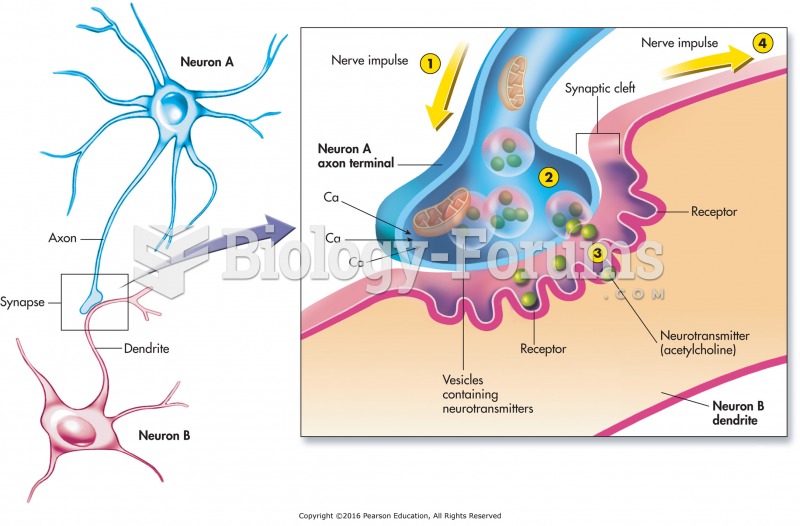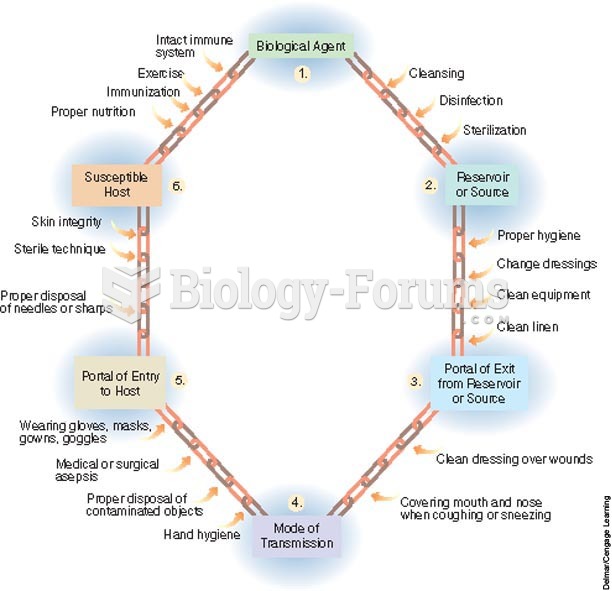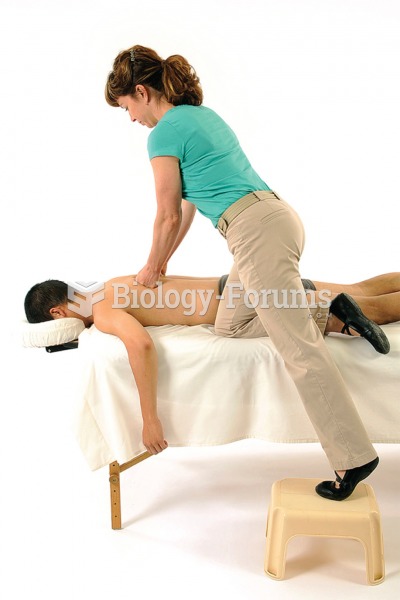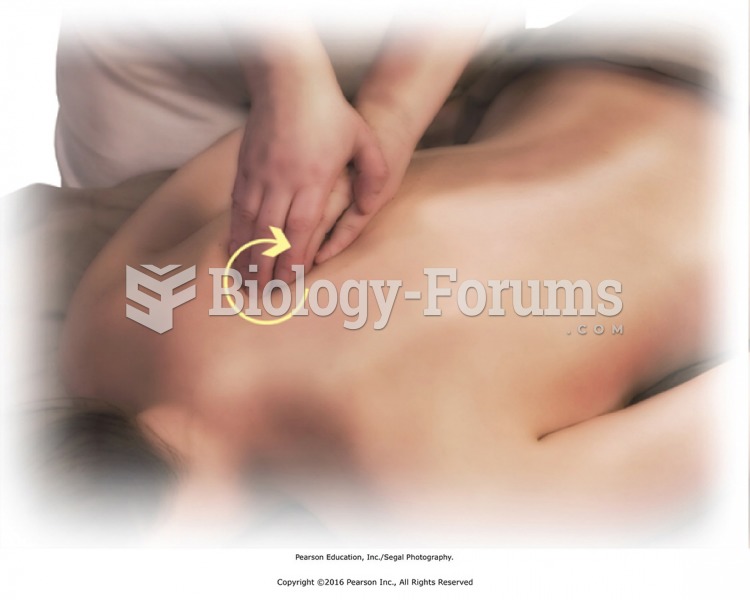|
|
|
It is important to read food labels and choose foods with low cholesterol and saturated trans fat. You should limit saturated fat to no higher than 6% of daily calories.
Asthma-like symptoms were first recorded about 3,500 years ago in Egypt. The first manuscript specifically written about asthma was in the year 1190, describing a condition characterized by sudden breathlessness. The treatments listed in this manuscript include chicken soup, herbs, and sexual abstinence.
Cucumber slices relieve headaches by tightening blood vessels, reducing blood flow to the area, and relieving pressure.
Medication errors are three times higher among children and infants than with adults.
Certain chemicals, after ingestion, can be converted by the body into cyanide. Most of these chemicals have been removed from the market, but some old nail polish remover, solvents, and plastics manufacturing solutions can contain these substances.
 The chemical synapse. Step 1: The impulse travels down the axon. Step 2: Vesicles are stimulated to ...
The chemical synapse. Step 1: The impulse travels down the axon. Step 2: Vesicles are stimulated to ...
 The first step in the reprogramming procedure is to determine the current software installed using a ...
The first step in the reprogramming procedure is to determine the current software installed using a ...





